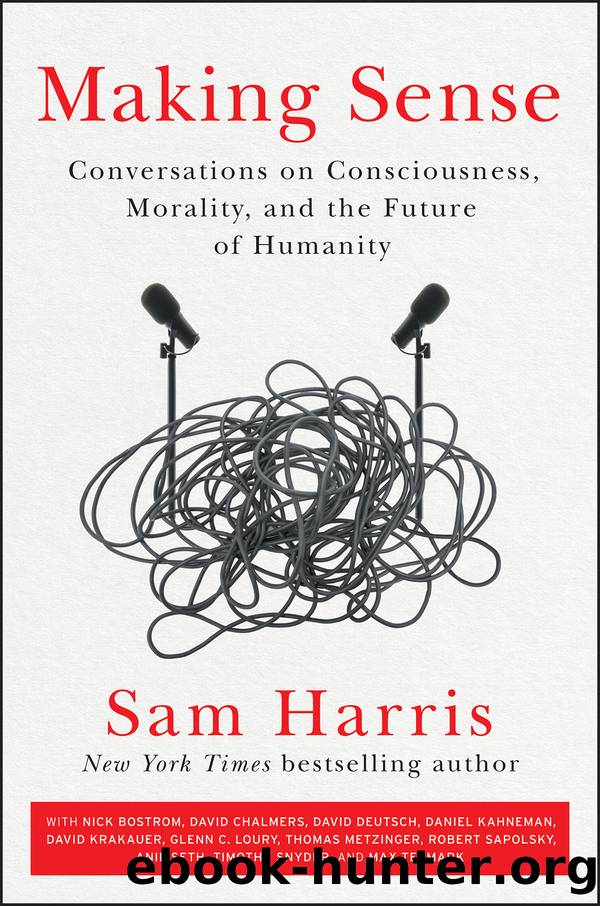Making Sense by Sam Harris

Author:Sam Harris
Language: eng
Format: epub
Publisher: HarperCollins
Published: 2020-08-11T00:00:00+00:00
When the cops show up, they’re going to be looking for, and encountering, more black men than white men. Given that any encounter with a cop can escalate to the point of lethal violence, whether reasonably or by dint of police incompetence, you’d expect the rate of blacks killed by cops to be higher than their demographic representation of 12 percent would suggest.
Loury: We’re on the same page here. Yes, we would expect the rate to be higher. The question is, How much higher? That was the question you asked me. Likewise, as you say, fairness would dictate that if it were the same job, the man and the woman should be paid the same rate. But the question is, How would I know, from aggregate statistics, whether or not I was comparing like with like? I need individualized data. I need data at the level of the encounters between police and citizens to assess whether or not the circumstances in which blacks and the police encounter each other, and the subsequent rate of killing, are similar.
Harris: That seems like a perfect segue to talk about the Fryer study.
Loury: It is. What I regard as a virtue of that study is the fact that such conclusions as are drawn there—subject to certain qualifications we might want to note—are based on individualized data of encounters between officers and citizens, not on a comparison of aggregate rates across large collectivities, where you don’t really know whether you’re comparing like with like.
Harris: Roland Fryer was a student of yours, is that correct?
Loury: And that’s an important qualifier. I like Roland Fryer very much. I was his mentor when he was in graduate school, and he and I have written some papers together. We’re good friends and close colleagues. I’m proud of him. He’s now one of the leading young—“young” meaning under forty—applied economists working today.
Harris: So you’re probably better qualified to summarize the findings of his study, as well as its flaws. Some people, and one of them is Rajiv Sethi, whom you’ve mentioned, have pointed out specific limitations. Perhaps you can discuss the Fryer findings and the limitations as you see them. Also, Fryer’s data aren’t representative of the whole nation; he looked at specific cities.
Loury: It’s an ongoing project and I expect we’ll see more of it as time goes on. The study in question, which was reported on in a front-page piece in the New York Times just after it was released, is now a working paper at the National Bureau of Economic Research. Anyone can find it online. It’s based on data from the city of Houston. Fryer’s ongoing project has data from other cities as well, but the main findings of the study are based on data from Houston. Fryer is trying to control for the specific aspects of the encounter between a police officer and a citizen—things like, What part of town did it occur in? What time of day? Was the suspect armed? Did the police
Download
This site does not store any files on its server. We only index and link to content provided by other sites. Please contact the content providers to delete copyright contents if any and email us, we'll remove relevant links or contents immediately.
Professional Troublemaker by Luvvie Ajayi Jones(29445)
Whiskey Words & a Shovel I by r.h. Sin(19198)
Rewire Your Anxious Brain by Catherine M. Pittman(18337)
Healthy Aging For Dummies by Brent Agin & Sharon Perkins RN(16935)
Cat's cradle by Kurt Vonnegut(14804)
Talking to Strangers by Malcolm Gladwell(12916)
The Art of Thinking Clearly by Rolf Dobelli(9951)
They Both Die at the End by Adam Silvera(9520)
The 5 Love Languages: The Secret to Love That Lasts by Gary Chapman(9316)
Doing It: Let's Talk About Sex... by Hannah Witton(9094)
The Compound Effect by Darren Hardy(8544)
Thirteen Reasons Why by Jay Asher(8493)
Goodbye, Things by Fumio Sasaki(8306)
Wonder by R.J. Palacio(8281)
Atomic Habits: Tiny Changes, Remarkable Results by James Clear(8067)
Becoming Supernatural by Dr. Joe Dispenza(7869)
Tools of Titans by Timothy Ferriss(7850)
Wonder by R. J. Palacio(7756)
Should I Stay or Should I Go? by Ramani Durvasula(7440)
